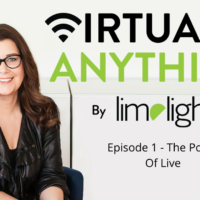You Just Booked Your Keynote Speaker! 4 Tips You Can’t Miss!
By Kimberley King
You got the thumbs up from your executive team and committee. You just booked your keynote speaker–Whoop! It’s green light GO with your top keynote choice! Contracts are now fully executed and it’s time to get working on the details! Here are 4 crucial things to think about…
Timing & Length. Keynotes are often positioned as ‘openers or closers’ at an event. They can create a powerful way to start a conference or wrap up the day and send attendees off on a high note! They are generally 60-75 mins and sometimes can include Q&A. As much as it may seem efficient to have a speaker deliver a keynote over a meal, it is a speaker’s least favorite time to engage an audience. Competing for attention over food is a distraction for any speaker–and sometimes the food wins! 😊If this is the only time you can schedule the speaker, at the very minimum-ensure that meal service is finished and coffee\tea is quietly being served before the speaker takes the stage. PRO TIP: pre-set salads or have a shareable appetizer than can be passed around to save on serving time. A family style dessert platter is another way of saving service time at the end of the meal while creating a little more interaction between guests. Note- Lunch or dinner keynotes are often shorter… 35-45 minutes is optimal.
Room Layout. The format used to set up the room for the keynote should be another topic of discussion. Round tables seat 8-10 people and are generally the preferred set up as they can be re-set for meals; attendees can take notes, have coffee/snacks etc. It is a bonus for any speaker when the entire table is facing the stage. If space permits–cabaret style or ‘half rounds’ of 6 people are a great option In the case of larger audiences, sometimes theater-style seating is the only choice. Just make sure your speaker knows in advance what the room set up is, and if you have to change it up for some reason-let them know in advance. Pet peeve of any speaker? Long, narrow rooms and the stage is set at one end and not the middle…try to keep your speaker in front of as many attendees as possible. It will improve engagement, participation and connectivity to the speaker. There should be great effort put into location and overall setup to make it comfortable for both the audience and the speaker. PRO TIP: Click for some unique Seating & layout options.
Pre-Event call. This call is paramount. It will help brief your speaker on the audience, the event background & theme, company or association history, challenges and opportunities. Basically, it should inform the speaker about what keeps attendees up at night- and how they can deliver the most tuned-in, relatable message. Allow between 30-45 mins for these calls and be prepared with solid insight about the event, audience composition (Male-Female ratios, age ranges, geographic make up, whether or not spouses attend, etc) and most importantly–your desired outcomes for the session. PRO TIP: Ensure the speaker has the opportunity to ask questions- I‘ve sat in on some calls where the speaker couldn’t get a word in edgewise! This is such an incredible opportunity to dramatically improve the speaker’s success of connecting with your audience. Give them the opportunity to dig a little deeper in any areas that need clarification or make suggestions that will improve the session. You’ve hired an expert- so make sure you use them to their full potential!
Sound & AV: Never compromise quality sound or a speaker’s technical requirements in favor of budget. Think about the stage as the speaker’s workplace- we all want to work in an environment that sets us up for success, right? We have our own tools that make us most efficient, most confident and allow us to do the best job. Speakers are no different. A speaker’s AV requirements should be outlined on the contract, but it’s important to discuss them in detail as you begin to execute the event. They generally prefer to use their own laptops (and YES, they often use MacBooks and are the preferred choice of most speakers!). If there are interactive components, make sure you have dedicated internet services. All speakers should have opportunity to do a sound check: they may simply want to test microphone levels, or it may want to run through their PPT with a tech to ensure timing cues are set and that videos play quickly and without any delay. Respect this time, be available should the speaker have any additional requirements. PRO TIP: Immediately following the sound check can be a potential time to introduce the speaker to the person who will welcome them onstage. It creates rapport and an even more powerful opening to the session.
And finally…what’s the best way you can thank your speaker? With a well-written, honest and authentic testimonial. Here’s to an amazing event day!




